Digital nomads in Santa Marta are discovering one of Colombia’s hidden gems, where the Caribbean Sea meets the foothills of the Sierra Nevada mountains, creating the perfect backdrop for the remote work lifestyle.
With a perfect mix of natural beauty, urban convenience, and party, Santa Marta offers an unparalleled experience for those seeking to escape the conventional work environment.
This guide is your doorway to understanding why digital nomads in Santa Marta choose this beautiful corner of Colombia as their office and home away from home.
Why Santa Marta?
Santa Marta is getting more and more popular among digital nomads looking for its blend of natural wonders, rich culture, low prices, and welcoming communities. This relatively small Caribbean town offers an unparalleled work-life balance, making it your next remote work paradise.
Nestled between the sea and the majestic Sierra Nevada mountains, Santa Marta is the gateway to the renowned Tayrona National Park, where untouched beaches meet lush jungles and numerous archaeological sites of significant cultural and historical importance.
Apart from the beach and the mountains, the cost of living here is significantly lower than in many Western countries, making it possible to enjoy a high quality of life without breaking the bank.
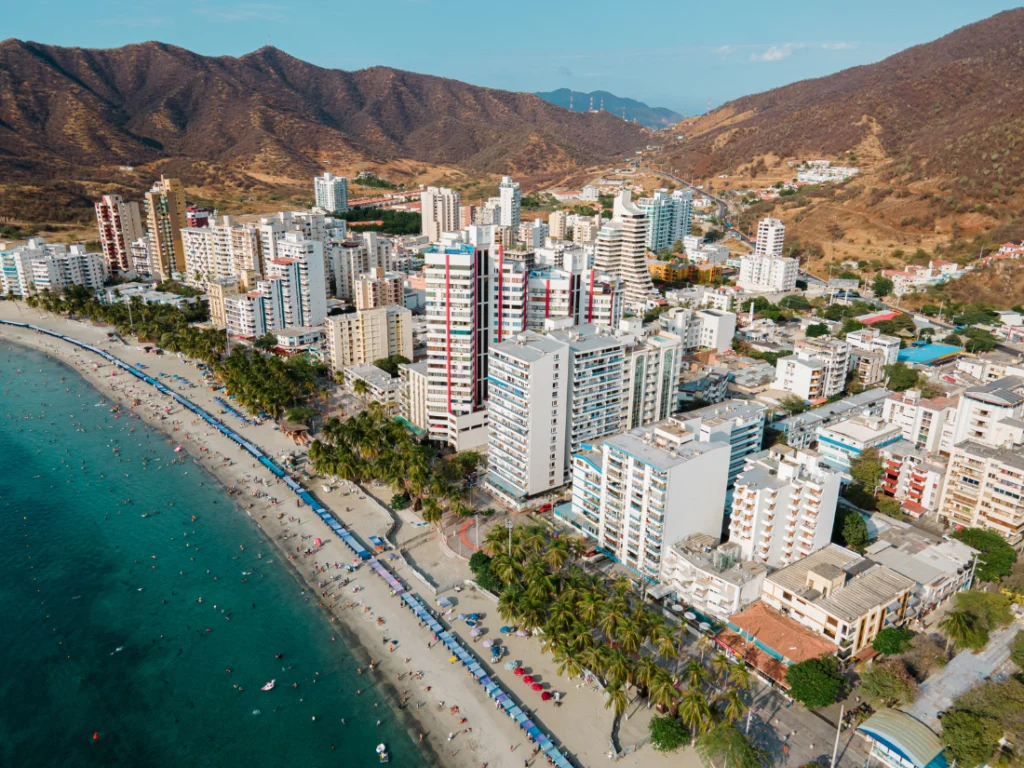
Santa Marta or Medellín for a Digital Nomad Hub?
Santa Marta and Medellín are hubs for digital nomads in Colombia, but they are very different. Each city offers its unique atmosphere, lifestyle, and advantages for the remote working community that might be more or less enjoyable for you, depending on your style.
Santa Marta, with its prime location between the Sierra Nevada mountains and the Caribbean Sea, is the natural choice for those seeking a mix of beach life, natural beauty, and historical richness. Its smaller size and more relaxed pace offer a tranquil lifestyle, contrasting sharply with the hustle and bustle of bigger cities.
Advantages include easy access to beaches, Tayrona National Park, and various hiking trails, making it ideal for those who like to balance work with outdoor adventures. The cost of living is generally lower than in Medellín. However, Santa Marta has limited urban amenities and fewer coworking spaces.
On the other hand, Medellín is known for its pleasant climate and innovative spirit, being the most popular gathering point for digital nomads in Colombia. The city offers an impressive mix of urban convenience, cultural activities, and a strong sense of community among remote workers.
The benefits of choosing Medellín include an innovative culture, many coworking spaces, tech meetups, networking opportunities, superior urban lifestyle and amenities, and a wide range of cafes, restaurants, nightlife, and cultural events.
Although its cost of living is still affordable by international standards, Medellín’s popularity has increased living costs compared to smaller cities like Santa Marta.
Digital Nomad Destinations in Latin America:
• Digital Nomads in Medellín
• Digital Nomads in Cuba
Living in Santa Marta
To make the most of your experience as a Digital Nomad in Santa Marta, here are some practical tips and insights on daily living, safety, and cultural etiquette.
Daily Living Tips in Santa Marta
Supermarkets and Local Markets: Santa Marta has a variety of supermarkets where you can find almost everything you need for day-to-day living. Look for chains like Éxito, Olímpica, and Carulla for a wide range of products.
Additionally, don’t miss out on local markets such as Mercado Público de Santa Marta for fresh, local produce, meats, and seafood at lower prices and, of course, people-watching. Shopping at these markets also supports the local economy and offers a more authentic glimpse into the daily life of Santamartinos.
Gyms and Fitness: For those looking to stay active, Santa Marta has several gyms and fitness centers around the city. From more local, no-frills gyms to higher-end options with a broader range of fitness classes and modern equipment, there’s something for every fitness level and budget.
Additionally, the city’s natural surroundings provide ample opportunity for outdoor activities like running along the beach, hiking in the nearby mountains, or practicing yoga with a sea view.
Healthcare: Santa Marta has a range of healthcare services, including hospitals, clinics, and pharmacies. The city’s healthcare facilities are generally of a good standard, with public and private options available.
Some expats travel to larger cities like Barranquilla or Bogotá for more complex medical needs. It’s advisable to have health insurance that covers medical treatment in Colombia to ensure access to the best facilities and care.
Cost of Living
The cost of living in Santa Marta, Colombia, is one of the city’s appealing aspects for digital nomads, expats, and travelers seeking a rest at the Caribbean beauty without breaking the bank.
Santa Marta offers a relatively affordable lifestyle compared to many Western countries and other Colombian cities. Here’s a breakdown of the main expenses to consider:
Accommodation
- Budget Options: Hostels and shared apartments can be found for as low as $10-25 USD per night. Monthly rentals for a room in a shared apartment start around $200-300 USD.
- Mid-Range Options: Private apartments or studios in good locations can range from $400 to USD 900 per month, depending on amenities and proximity to the city center or beaches.
- Luxury Options: For those seeking more upscale living, luxury apartments and villas are available at USD 1000 per month, offering amenities like swimming pools, security, and stunning views.
Food and Dining
- Groceries: Shopping at local markets and supermarkets for basic groceries can cost around $150-200 USD per month for a single person, depending on dietary habits.
- Eating Out: A meal at an inexpensive local restaurant can cost between $3-5 USD. Mid-range restaurants offer meals from $7-15 USD per person. International cuisine and finer dining options are also available, with prices varying widely.
Transportation
- Public Transportation: A one-way ticket on local buses costs less than USD 1. Monthly passes are not commonly used, as pay-per-ride is the norm.
- Taxis and Ride-Sharing: Taxis and ride-sharing apps offer convenient transportation around the city, with average fares ranging from $2-5 USD for short to moderate distances.
Utilities and Internet
- Utilities: For an apartment, the monthly cost of utilities (electricity, water, and garbage collection) can range from $30 to USD 70, depending on usage and the size of the living space.
- Internet: High-speed internet plans cost around $20-30 USD monthly. Many accommodations include internet in the rental price, so this may not be an additional expense for some.
Leisure and Entertainment
- Activities: Entrance fees to attractions like Tayrona National Park are around $15-20 USD. Cinema tickets are about USD 4, and gym memberships range from $20-40 USD per month.
- Nightlife: The cost of a night out varies, with beers priced at $1-2 USD in local bars and cocktails starting at $3-5 USD in trendier spots.
Healthcare
- Insurance: Health insurance costs vary widely depending on coverage, but expect to pay around $50-100 USD per month for basic private health insurance. I used this one for my whole stay and love it!
- Medical Consultations: Visiting a general practitioner or specialist without insurance can cost between $20-50 USD per consultation, significantly less than in many Western countries.
Internet in Santa Marta
Like many destinations favored by digital nomads, the quality and availability of internet in Santa Marta is critical in ensuring a productive and enjoyable stay.
Over the years, Santa Marta has significantly improved its internet infrastructure, catering to the growing demands of remote workers, tourists, and the local population.
However, the quality of the internet can vary widely, so it’s advisable to read reviews or inquire about the Wi-Fi speed before booking.
Purchasing a local SIM card with a data plan is easy in Colombia and a very convenient option. Mobile data coverage is generally good in Santa Marta and its surrounding areas, providing a reliable backup for those times when Wi-Fi isn’t available.
Safety Tips
General Awareness: Like any city, staying aware of your surroundings is important. Not even Colombians would say that Santa Marta is the safest place in the country, but that does not mean you will be in danger.
Use common sense, avoid displaying expensive jewelry or electronics conspicuously, and be cautious when withdrawing money from ATMs, preferably in well-lit, secure areas.
Exercise caution when walking at night, especially in less crowded areas. Stick to well-lit, busy streets, and consider using safe transportation options after dark. If you choose to hike, always hire a guide to go with you or do it on the weekends, and the beaches and trails are busy.
Transportation: Taxis are safe to use in general. Most of them have meters, but you can negotiate the price beforehand. Uber does not work there, but there are other apps you can download, such as InDrive.
Cultural Etiquette
Greetings: Colombians are warm and friendly, often greeting with a handshake or one kiss on the cheek in more informal settings. It’s common to exchange pleasantries and ask about each other’s well-being.
Time and Punctuality: Time is more flexible in Colombia, and events or meetings may start later than scheduled. However, as a sign of respect, try to be punctual for appointments or social gatherings.
Respect and Hospitality: Showing respect and appreciation for local customs and hospitality goes a long way. Colombians are proud of their country and culture and appreciate when foreigners take an interest. Learn a few basic phrases in Spanish, and don’t hesitate to ask about traditions or cultural practices.
Environmental Consciousness: Santa Marta is surrounded by natural beauty, and there’s a growing emphasis on sustainability and environmental protection. Be mindful of your environmental impact by reducing plastic use, respecting wildlife and natural sites, and supporting eco-friendly businesses.
Getting There and Around
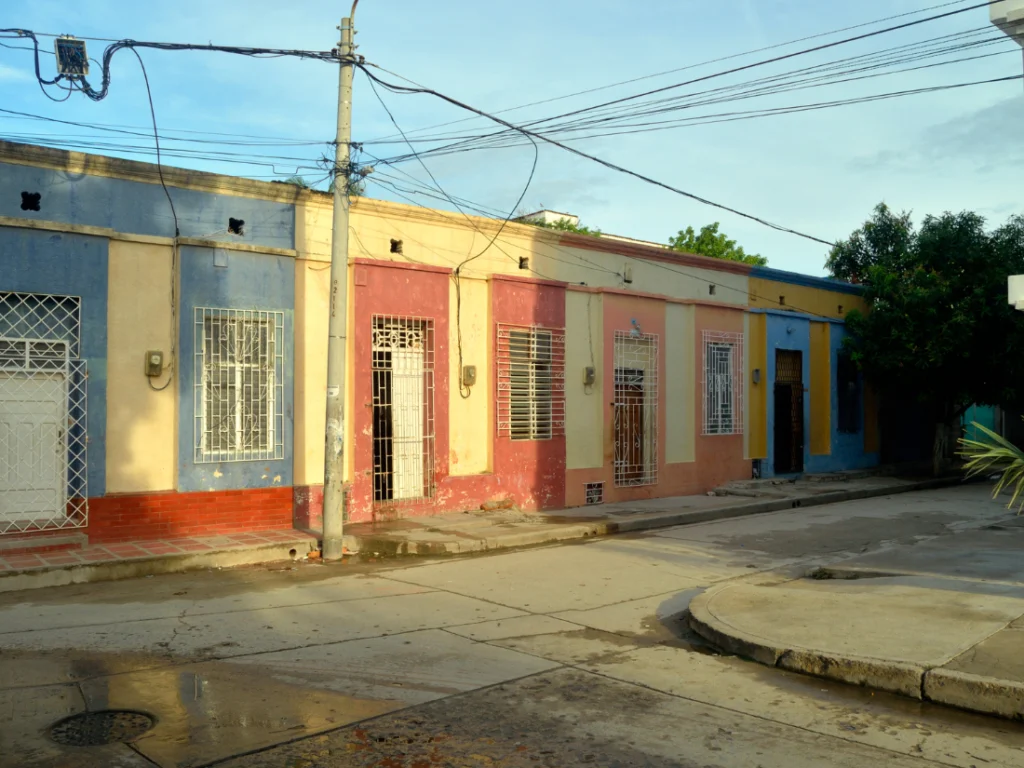
Navigating your way to and around Santa Marta, Colombia, is an adventure. Whether arriving from international destinations or journeying from within Colombia, Santa Marta is relatively easy to access.
Getting to Santa Marta
By Air: The primary gateway to Santa Marta is the Simón Bolívar International Airport (SMR), about 30 minutes from the city center. The airport serves direct domestic flights from major Colombian cities like Bogotá, Medellín, and Cali and international flights from select destinations. Upon arrival, taxis and shuttle services are available to take you into the city.
By Bus: For those traveling from within Colombia, buses to Santa Marta are available from major cities. The journey offers a scenic route, especially if you’re coming from along the coast.
Buses arrive at the Terminal de Transportes de Santa Marta, from where you can catch a taxi or a local bus to your accommodation.
By Car: Renting a car is an option for those who prefer to drive themselves. The roads to Santa Marta are generally in good condition, and driving offers the flexibility to stop and explore along the way.
However, be prepared for Colombian driving styles and remember that parking in Santa Marta can be challenging during peak seasons.
Getting Around Santa Marta
Public Transport: Santa Marta’s public bus system is an affordable way to get around, connecting the city center with popular areas like Rodadero, Taganga, and the entrance to Tayrona National Park.
Buses are frequent, but be prepared for a lack of air conditioning and tight spaces during busy times.
Taxis: Taxis are a convenient and relatively inexpensive way to move around Santa Marta. They can be hailed on the street. However, language may be a barrier to communicating with your driver if you do not speak any Spanish.
They might also try to overcharge you when they realize you are a foreigner, so be informed about the regular prices to your destination.
Exploring Nearby Attractions: To visit nearby attractions like Tayrona National Park, Minca, or Palomino, you can use public buses and shuttle services or join organized tours.
These options provide the flexibility to explore at your own pace or enjoy the convenience of having transportation and logistics handled for you.
Best Neighborhoods for Digital Nomads in Santa Marta
Here’s a look at the best neighborhoods for digital nomads in Santa Marta, along with their pros and cons.
Rodadero
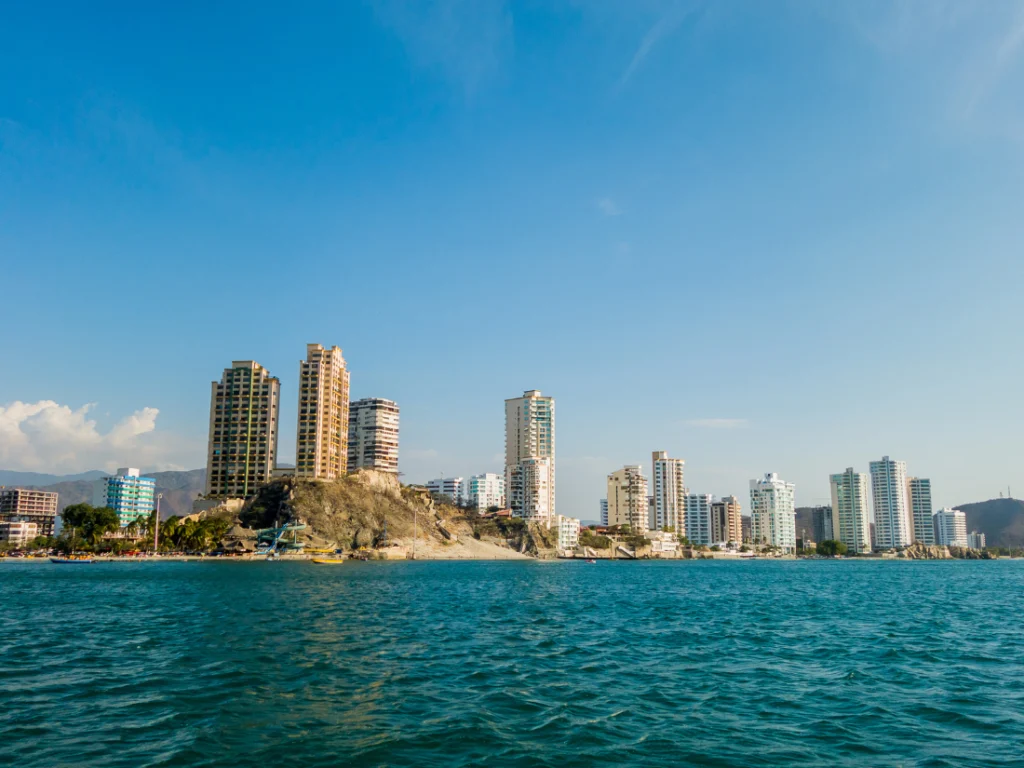
Pros:
- Beachside Living: Rodadero is famous for its stunning beach, offering a picturesque setting for those who love working with a sea view. The beachfront is lined with various restaurants, cafes, and bars, providing ample options for leisure and dining.
- Amenities and Accommodations: This area boasts a wide range of accommodations, from high-rise apartments to cozy hostels, catering to different budgets and lifestyles. It’s also well-equipped with supermarkets, pharmacies, and other conveniences that make daily life easier for a digital nomad.
- Vibrant Atmosphere: Rodadero has a lively atmosphere, especially during the holiday seasons, making it perfect for those who enjoy socializing and meeting new people.
Cons:
- Tourist Prices: Being a popular tourist destination, prices for food, accommodations, and services can be higher than in other parts of Santa Marta.
- Crowded During Peak Seasons: The area can become quite crowded, particularly during Colombian holiday periods, which might detract from the tranquility some nomads seek.
Centro Histórico (Historic Center)
Pros:
- Cultural and Historical Richness: The Historic Center is the heart of Santa Marta, offering a deep dive into the city’s history and culture. Its colonial architecture, museums, and cultural sites provide a captivating backdrop for daily life.
- Vibrant Local Life: Living in Centro Histórico allows digital nomads to immerse themselves in local Colombian life, with easy access to traditional markets, local eateries, and artisan shops.
- Walkability: This area is highly walkable, with most amenities and attractions within easy reach. This not only adds to the quality of life but also helps in reducing transportation costs.
Cons:
- Noise Levels: The bustling nature of the Historic Center means that noise can be an issue, especially in areas close to main squares or nightlife venues.
- Limited Outdoor Space: Compared to other neighborhoods, private outdoor spaces such as balconies or terraces might be harder to come by in historic buildings.
Taganga
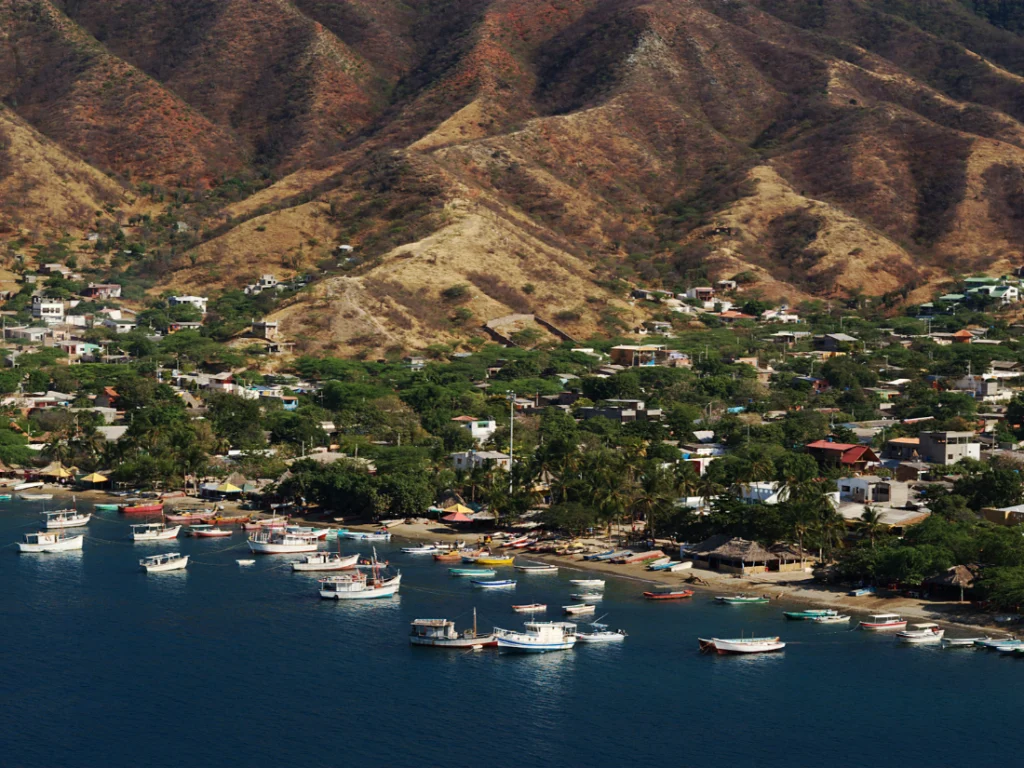
Pros:
- Quiet and Relaxed Atmosphere: Taganga is a village close to Santa Marta that offers a more laid-back lifestyle, ideal for digital nomads seeking peace and quiet. The small fishing village is known for its beautiful bay and relaxed vibe.
- Diving and Outdoor Activities: It’s a paradise for diving enthusiasts, with several dive shops offering courses and excursions. The surrounding hills also provide excellent hiking opportunities.
- Community Feel: Taganga has a close-knit community of locals and expats, making it easy to build connections and feel at home.
Cons:
- Limited Amenities: While Taganga has basic amenities, its smaller size means fewer options for shopping, dining, and nightlife compared to larger areas.
- Connectivity: The internet connection can be less reliable than in the city center, which might be a consideration for those whose work depends heavily on online access.
Coworking Spaces and Cafés in Santa Marta
Here’s a roundup of some top coworking spaces and cafés in Santa Marta, each offering unique amenities and environments conducive to work.
1. Café Lulo
- Features: Strong Wi-Fi, excellent coffee, fresh juices, and healthy food options.
- What Makes It Unique: Café Lulo has a cozy ambiance that’s great for working. It’s not just the food and drinks that attract remote workers but also the friendly staff and the café’s commitment to sustainability.
Address: Cra. 3 #16-34, Comuna 2, Santa Marta
2. Ikaro Café
- Features: Fast Wi-Fi, artisan coffee, vegetarian food, and a quiet atmosphere.
- What Makes It Unique: Ikaro Café stands out for its dedication to high-quality, locally sourced coffee and its tranquil environment, making it a perfect spot for those needing to focus without distractions. The café also doubles as a cultural space, hosting art exhibitions and cultural events that offer a taste of local creativity.
Address: Cl. 19 #3-60, Comuna 2, Santa Marta
3. PachaMama Restaurant
- Features: Beach front, chill atmosphere, seafood, good drinks
- What Makes It Unique: Pachamama Restaurant is located in the fishing village of Taganga and captures the essence of the area’s laid-back and eclectic vibe. Known for its fusion of local flavors with international cuisine, PachaMama has become a must-visit spot for locals and travelers seeking a unique dining experience. The restaurant’s commitment to fresh, locally sourced ingredients and its creative menu set it apart as a culinary destination in Santa Marta’s greater area.
Networking and Digital Nomad Community
Santa Marta may not be as popular as Medellín among digital nomads and might not host as many networking events as you would expect.
However, it’s a major draw for travelers of all kinds, offering many opportunities to connect with others at Tayrona Park, Minca, or the beaches in Magdalena. If making friends and connections is important to you, I highly recommend staying at hostels like Rio Hostel or Costeño Beach for at least a few days.
Though these hostels are located outside the city, on the way to Tayrona Park, they are among the best in Colombia and host numerous parties and events that are perfect for socializing.
What to do in Santa Marta when you are not working
1. Explore Tayrona National Park
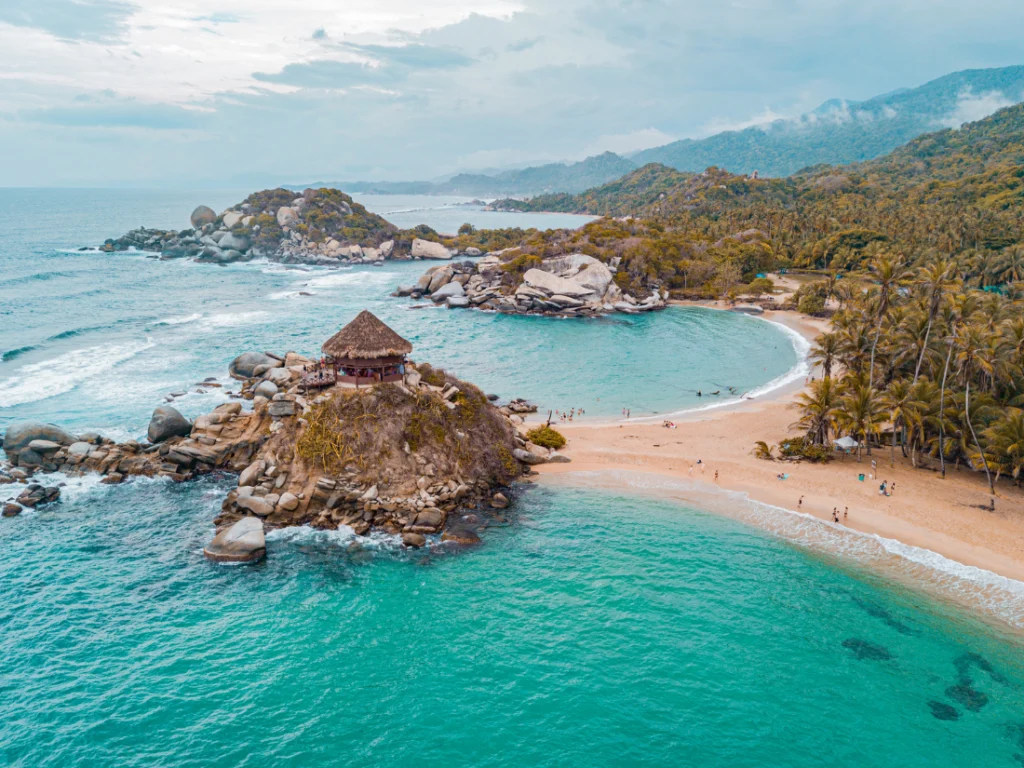
Tayrona National Park is one of the most significant destinations in Colombia and is just one hour away from Santa Marta. The area is sacred land for the indigenous people of the Sierra Nevada de Santa Marta and features beautiful beaches nestled alongside mountains and jungle.
Spend a day or two trekking to hidden beaches like Cabo San Juan or La Piscinita, where the dramatic coastline offers breathtaking views and beautiful spots for a refreshing swim. Here, you find a cool day trip to the Tayrona.
2. Dive into the Local Culture at Centro Histórico
The historic center of Santa Marta, with its colonial architecture and bustling markets, is where life happens in the city. Wander through the streets, visit the iconic Santa Marta Cathedral, shop local crafts at the Mercado de Artesanias, and sample Caribbean street food from local vendors. The evenings are lively, with bars and restaurants offering a taste of the local nightlife.
☀️ Book here a free walking tour in Santa Marta and see all its history, monuments, and fascinating artistic heritage.
3. Relax at the Beaches
Santa Marta boasts beautiful beaches that are perfect for relaxation or engaging in water sports. Rodadero Beach is famous for its lively atmosphere and clear waters, while Playa Blanca offers a more secluded relaxing space. Activities like snorkeling, kayaking, and jet skiing are readily available for those seeking adventure.
4. Discover the Lost City Trek
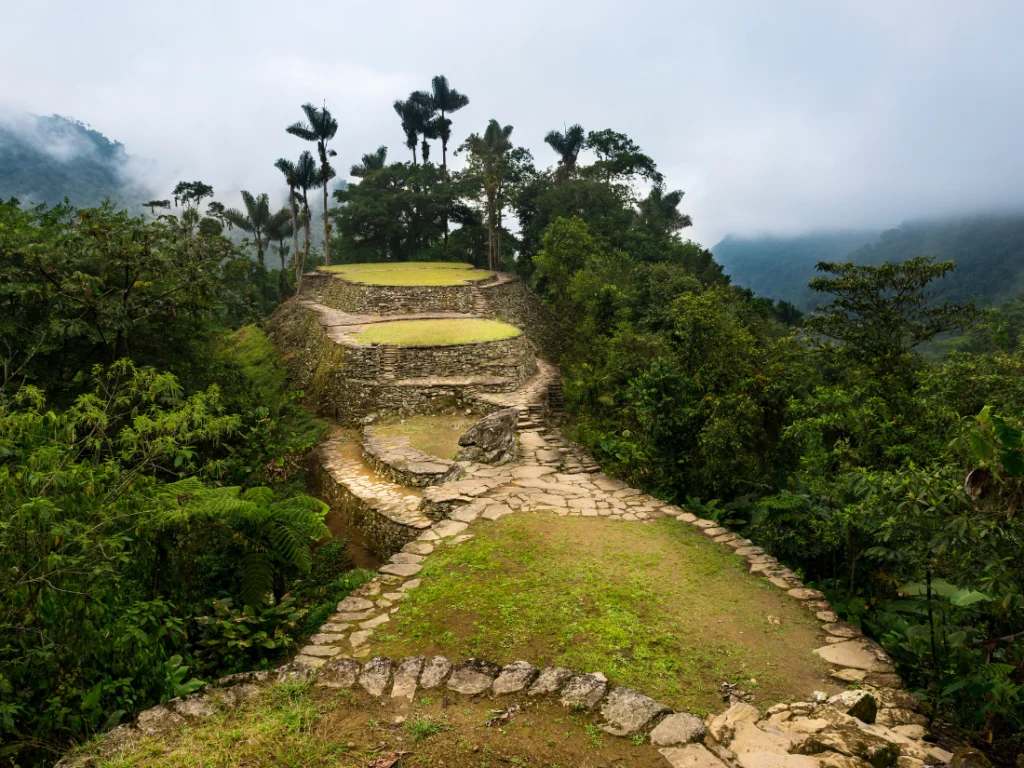
For the more adventurous, the Lost City Trek is an unforgettable experience. This challenging four to five-day hike through the Sierra Nevada jungle leads to the ancient ruins of Teyuna, known as the Lost City. It’s a journey back in time, offering insight into the indigenous cultures of Colombia and stunning natural scenery. You can book It here!
5. Enjoy the Culinary Scene
Santa Marta’s culinary scene is a delightful mix of traditional Colombian flavors and international cuisine. From fresh seafood dishes by the beach to gourmet dining in the city center, there’s something to satisfy every palate. Don’t miss the chance to try local specialties like arepas, ceviche, and freshly caught fish, accompanied by a refreshing limonada de coco.
☀️ This guided walking food tour will guide you through the basics of local cuisine.
6. Visit Minca
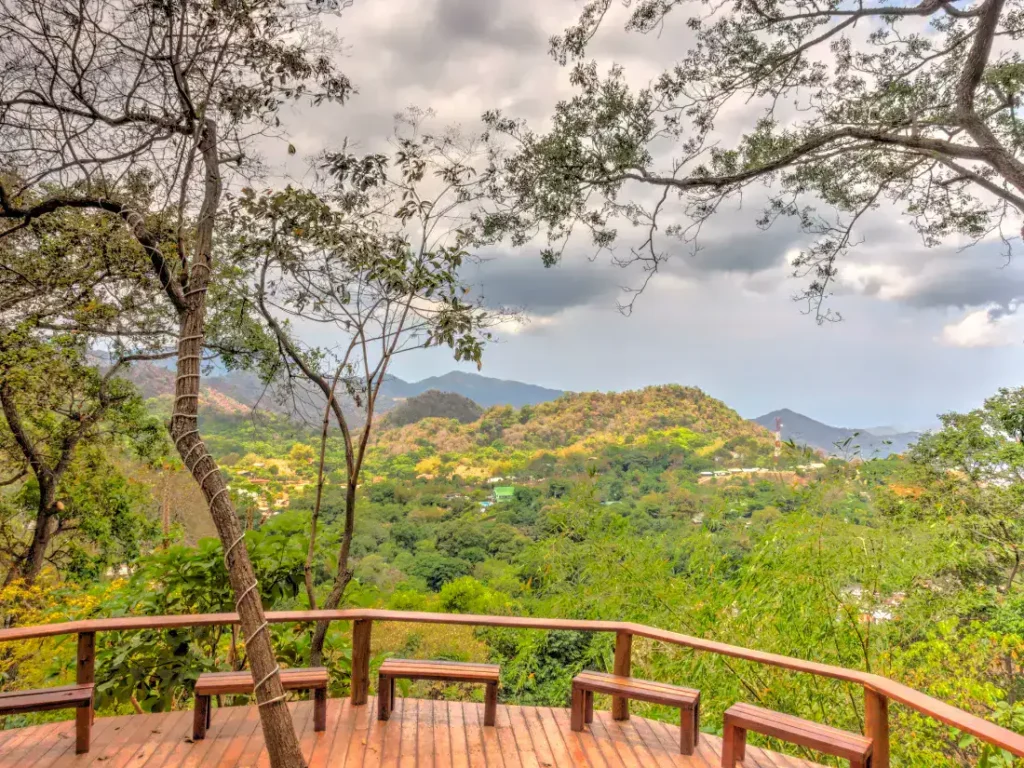
Just a short drive from Santa Marta, Minca is a serene mountain village known for its organic coffee farms, waterfalls, and cool mountain air.
Spend a day exploring the coffee plantations, swimming in the natural pools, and hiking to viewpoints that offer panoramic views of the surrounding mountains and coastline. Make sure to do a full-day coffee and cocoa tour to enjoy the full experience in Minca.
7. Relax in Palomino
Palomino is a small beach village with hippie vibes that was by far one of my favorite places in Colombia. I even moved from Santa Marta to there and worked remotely from the beachside for 20 days (the internet is not great, though).
Known for its beach parties and surf contests, it’s a great place to relax and do adventure activities such as river tubing and hiking.
8. Lean about the Indigenous cultures in Colombia
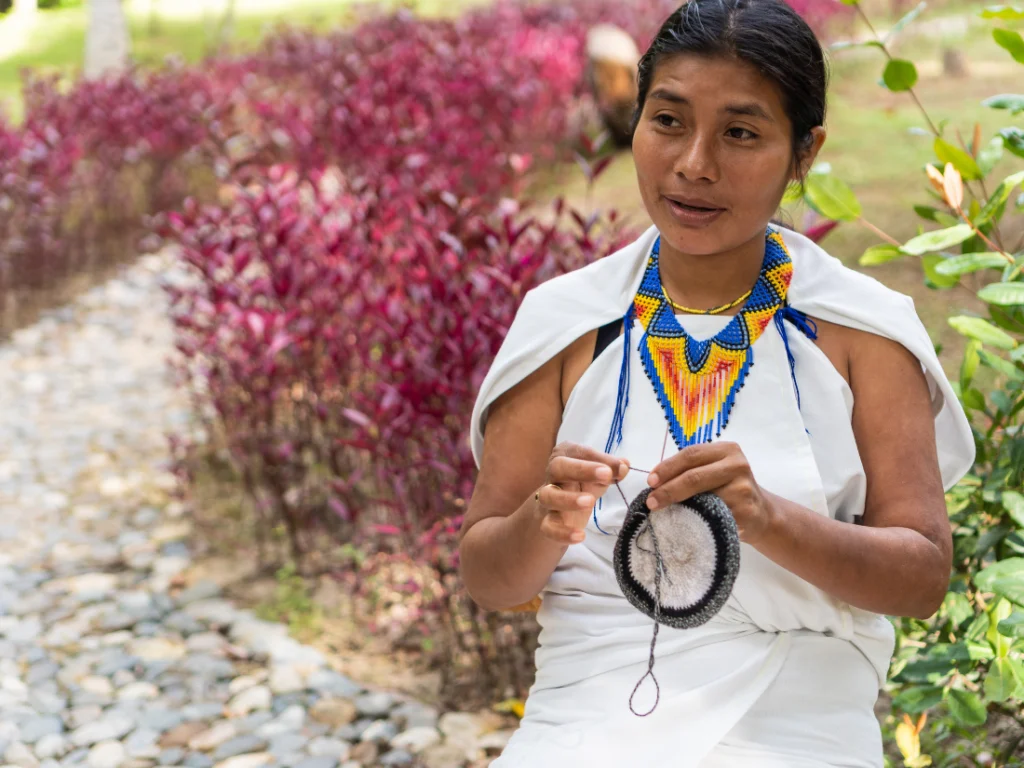
The Sierra Nevada de Santa Marta is home to the Arhuaco, Kogui, Wiwa, and Kankuamo peoples. These communities maintain a deep spiritual relationship with their environment, viewing themselves as guardians of the Earth.
Visiting this area with a respectful and mindful approach can provide insights into their cosmology, social structures, and environmental wisdom.
Guided tours, often led by indigenous members themselves, offer a respectful way to learn about their philosophies, traditions, and efforts in conservation. I suggest booking a free walking tour here if you want to learn more about these cultures.
☀️ To gain an even deeper understanding, how about joining a 1-2 day trip to an authentic Kogi Community?
9. Take Part in Local Events and Festivals
Keep an eye out for local events and festivals, which offer a unique opportunity to experience Colombian culture up close. From music festivals to cultural celebrations, these events are a great way to mingle with locals and other travelers, enriching your stay in Santa Marta.
Digital nomad insurance in Colombia
Ready to embark on your next adventure with peace of mind? Whether you’re a digital nomad, a frequent traveler, or someone embarking on a long-awaited journey, having reliable travel insurance is essential.
With SafetyWing, you can explore the world knowing you’re covered, from unexpected medical emergencies to travel interruptions.
And the best part? You can sign up quickly and affordably, ensuring you’re protected wherever your travels take you.
Click through and learn more about SafetyWing’s comprehensive coverage options tailored for the world’s explorers. Click here to find out more.
Frequently Asked Questions about Digital Nomads in Santa Marta
Santa Marta offers reliable internet in most urban areas, with many coworking spaces, cafés, and accommodations providing high-speed connections suitable for remote work.
Yes, Santa Marta has several coworking spaces equipped with all the amenities digital nomads need, including high-speed internet, meeting rooms, and networking opportunities.
The cost of living in Santa Marta is relatively affordable, with options to suit various budgets. Expenses will vary depending on lifestyle choices and accommodation preferences.
Santa Marts has a few safety issues that might affect visitors, but they can be managed badoptingon standard safety precautions, especially at night and in less touristy areas.
Public buses, taxis, and ride-sharing apps are readily available for getting around Santa Marta. For exploring nearby attractions, rental cars or organized tours are good options.
Santa Marta can be visited year-round, but the dry season from December to April offers the most pleasant weather for both work and leisure activities.
Editor of Yes, Summer! I am a Brazilian journalist, writer, and digital nomad. I have been traveling the world, telling stories, and tasting local beers since 2010. I am the co-founder of 360meridianos, a reference in travel writing in Brazil, and author of the newsletter Migraciones. On social media, I'm always reachable at @natybecattini.
